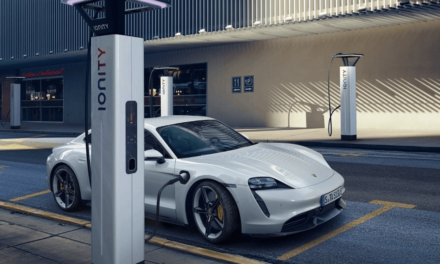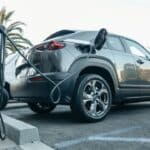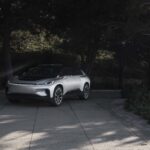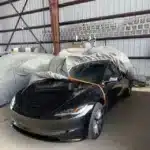As our world moves toward sustainable solutions to the environment to curb the impacts of climate change, the automobile sector continues to make great strides toward offering environmentally friendly options that mitigate the impact of carbon emissions.
Electronic vehicles are changing the way we approach private transportation for the better and are growing in popularity globally. While you no longer need gas to power these vehicles, you will need electricity to get from point A to point B.
Owners currently have both public and home charging solutions available to them for charging their vehicles. But there is a matter of compatibility to navigate when it comes to vehicle brands and chargers.
We take a closer look at the SAE J1772 (Level 2) electronic vehicle charger, also known as the J Plug, which is a North American Standard when it comes to electrical connectors for electric vehicles held by the SAE (Society of Automotive Engineers) International.
About SAE J1772 Charging Adapters
There are multiple plug-in electronic vehicles currently on the road, and there are two types of chargers available for home charging. They are the Level 1 and Level 2 varieties.
With level 1 charging, you use the charger that was included with the car. Most electric cars come with a cable adapter that can be plugged into any standard 120V outlet, as well as a grounded three-prong plug on one end and an SAE J1772 plug on the other. These can charge up to 124 miles in 20 hours.
Level 2 chargers, on the other hand, are sold separately from the car. These chargers are plugged into a 240V outlet and, depending on the charger and type of electric vehicle, can charge 3 to 7 times faster.
All level 2 chargers have an SAE J1772 connector, and you can find level 2 chargers at offices, grocery stores, and parking garages. They can be purchased and installed at your residential home as well.
All the newer plug-in electric vehicles use the SAE J1772 standard charger to connect to a charging port. This is especially true in the U.S. market due to public charging stations with this plug type in the national electric vehicle network.
A standard is an agreed-upon way of doing something and comprises technical specifications to be used consistently as a rule or guideline. In this instance, the SAE J1772 standard represents how charging stations connect with and charge the electric vehicle.
SAE J1772 Charging Speed
DC fast charging at public charging stations currently provide the fastest means of recharging your electric vehicle. DC fast charging greatly increases charging speed by providing DC power directly to the battery.
Typically, vehicles can get an 80% charge in about half an hour with a DC fast charger depending on, among other factors, the battery size and the output of the dispenser.
Currently, there are 3 types of DC fast charging in North America, namely, the CHAdeMO, the Combined Charging System (CCS), and the Tesla Supercharger. DC fast chargers are most useful for high mileage/long-distance driving and larger fleets, as well as drivers who have limited access to home recharging.
When it comes to charging your electronic vehicle on a level 2 charger at home, it takes around four hours to charge a standard battery (30-kWh) fully.
Considering that most electronic vehicle owners will likely charge their car overnight, four hours is more than enough time to have your vehicle’s battery fully powered and ready for your day-to-day travel.
SAE J1772 Tesla Adapter
An SAE J1772 Charging Adapter comes standard with the purchase of any Tesla vehicle. The adapter is compatible with most level 2 public charging stations and supports charging speeds of up to 19.2kW.
Most public charging stations use SAE J1772 chargers that are compatible with most brands of electric vehicles. However, the Tesla vehicle comes with a different adapter altogether. Currently, only 15% of public charging stations in the US are compatible with the Tesla adapter.
Despite this, Tesla happens to be one of the most popular electric cars amongst consumers.
For this reason, each Tesla sold comes standard with an SAE J1772 charger adaptor making it easier for Tesla owners to charge their vehicles at the standard charging stations available to the public.
More recently, electronic vehicle charger manufacturers have also started to make adapters suitable for connecting the standard SAE J1772 charger to a Tesla vehicle for the convenience of Tesla drivers.
Tesla drivers may, however, incur additional charges when making use of public charging stations that are not currently set up to be compatible with the Tesla electronic vehicle.
Cost
According to the Union of Concerned Scientists, the cost associated with charging an electric vehicle is substantially less than that of purchasing gasoline for the vehicle over a period of time.
They have found that the driver of an electronic vehicle could save an average of up to $800 per year by replacing their gas-powered vehicle with a more sustainable and environmentally friendly electronic vehicle.
However, this would depend on your ability to charge at home and what the structure of your utilities is like in your region.
Charging Areas
Some areas in the US, for instance, make electricity available to users at varying rates depending upon demand. During peak times, the rates associated with electricity usage are higher than that during off-peak times, such as late at night or early morning hours.
As most people are at home overnight, with their vehicles not in use, electronic vehicle owners are most likely to charge their vehicles during this time. With a utility plan that allows for a variance in line with the demand, the electronic vehicle owner would benefit greatly and enjoy optimum savings.
While there are public charging stations available that offer a free charging service, most do not. Charging your electronic vehicle at a public charging station may, therefore, not be as cost-effective an option as charging at home.
That said when compared to the price of gas, and because 80% of users charge their electric vehicles at home, electronic vehicle drivers will still experience substantial savings over the long run.
Did you find this article to be helpful? Learn more about EV charging and follow ZEV Society today!










